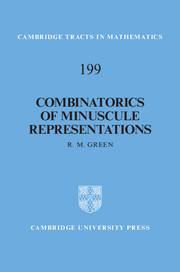Book contents
- Frontmatter
- Contents
- Introduction
- 1 Classical Lie algebras and Weyl groups
- 2 Heaps over graphs
- 3 Weyl group actions
- 4 Lie theory
- 5 Minuscule representations
- 6 Full heaps over affine Dynkin diagrams
- 7 Chevalley bases
- 8 Combinatorics of Weyl groups
- 9 The 28 bitangents
- 10 Exceptional structures
- 11 Further topics
- Appendix A Posets, graphs and categories
- Appendix B Lie theoretic data
- References
- Index
10 - Exceptional structures
Published online by Cambridge University Press: 05 February 2013
- Frontmatter
- Contents
- Introduction
- 1 Classical Lie algebras and Weyl groups
- 2 Heaps over graphs
- 3 Weyl group actions
- 4 Lie theory
- 5 Minuscule representations
- 6 Full heaps over affine Dynkin diagrams
- 7 Chevalley bases
- 8 Combinatorics of Weyl groups
- 9 The 28 bitangents
- 10 Exceptional structures
- 11 Further topics
- Appendix A Posets, graphs and categories
- Appendix B Lie theoretic data
- References
- Index
Summary
It follows from Example 8.2.11 and Exercise 8.2.12 that there is a tower of vector spaces
L(A5, ω3) ⊂ L(D6, ω6) ⊂ L(E7, ω6)
of dimensions 20, 32 and 56. This inclusion respects the decomposition of each space into weight spaces. This corresponds to a chain
W(A5)/W(A2 ∪ A2) ⊂ W(D6)/W(A5) ⊂ W(E7)/W(E6)
of containments of cosets of parabolic subgroups. (In the case of W(D6), we may use either of the two parabolic subgroups of type A5.) This chapter is about the surprisingly rich combinatorial structure of this chain of inclusions.
Section 10.1 introduces the famous configuration of 27 lines on a cubic surface. The symmetry group of this configuration is well-known to be the group W(E6). We shall see that the incidence properties of these lines turn out to be governed by the combinatorics of the minuscule module L(E6, ω5). We develop these ideas further in Section 10.2, which investigates the properties of Schläfli double sixes; these are particular collections of 12 lines on the cubic surface.
Section 10.3 introduces the theory of 2-graphs. Just as a graph may be regarded as a collection of distinguished pairs (i.e., edges) in a vertex set, a 2-graph may be regarded as a collection of distinguished triples in a vertex set. We shall see that there is an interesting 2-graph on the set of 28 bitangents in which the distinguished triples are the azygetic triples.
- Type
- Chapter
- Information
- Combinatorics of Minuscule Representations , pp. 248 - 274Publisher: Cambridge University PressPrint publication year: 2013

